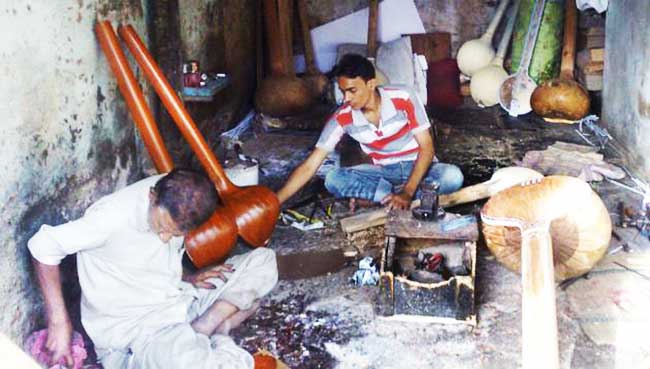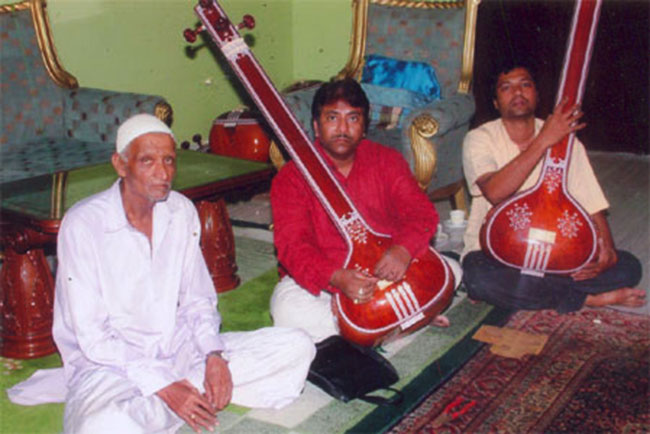Sitar-Making – Indian classical music that originated in the time of the Vedas is losing its glory and grandeur with time as are the musical instruments that are instrumental in creating the music.
The classical tones are now either intermixed with foreign music or other western forms of music, making it more of a fusion song version or are sung as it is by SPIC MACAY, having more than 500 chapters globally that conducts around 5000 events every year.
The Indian classical music and dance forms that are showcased through these events are only made possible through instruments such as sitar, sarod, veena, surbahar, tanpura, bansuri, shehnai, sarangi, santoor, violin, pakhavaj as well as tabla.
There are some more like harmonium, mridangam, etc. that are part of the Carnatic music but keeping in mind today’s rock, pop and rap generation, these songs and the instruments have disappeared from the scene.
It would make you wonder as to who makes these classical instruments. Who makes the sitar? Well, the truth is that not only the classical instruments have become out of sight these days but even the makers have.
Sitar being a cornerstone of Indian classical music , has a different sort of relevance in the Indian tradition and has therefore been an important feature of our past. Sad it is that the making of sitar has not gained as much popularity and as many skilful hands as it should have by now. However, we do have some families that have kept the art of sitar-making alive and have been only making sitars since number of ages you cannot even think of. One such family lives in Miraj, situated in Sangli, Maharashtra that has been doing rounds at making one of the most pleasant sounding string instrument since generations or 350 years to be precise.
This place boasts of its love for Hindustani music and original classical instrument makers who have been doing this work since years and have gained fame across the globe for keeping the art, technique and creative passion alive since a long span of time. It has now come to be this family’s heritage that they yearn to preserve at any cost.
Abdul Rahiman’s entire family is focussed on making the whole process of sitar-making a cult, from the wood work to the colouring to designing to putting the strings on the device and each and every other work related to the creation of heavy-weight instrument. They not only make creative designs and select gourds that are specifically known for making sitars, but have also been the pioneers of new inventions and innovative shapes and designs of the sitar. And you thought there are only different shapes and styles for guitars like the acoustic and electric one? Unfortunately, nobody knows that the Abdul Rahiman family has invented the wooden flat sitar and foldable sitars that have transformed the complete idea of how a sitar looks and feels.
Not only this, the family has been skilfully and passionately creating wooden sitar, black-coloured sitar and sur bahar, where the black sitar has been popularly called the black beauty because of its glossy fine black polish and the sur bahar is made using a flat gourd and can also have double gourds.
The family specialises in customizing their products as per the customer’s needs – the Angur Bel Sitar, Simple Sitar, Double Gourd Sitar, undecorated Sitar and Flat Gourd Sitar. Their company is known by the name of Abdulrahiman Sitarmaker and Sons.
It takes them 20-25 days to make one sitar and the price can range somewhere between Rupees 5,000-50,000. The family comprising of 8-10 members are as educated as talented and skilled they are. If some are engineers, others have pursued L.L.B. and B.Com. Despite this, they believe in keeping their tradition flowering and mushrooming with each new generation and preventing the art from becoming extinct.
Another place known for the making of classical musical instruments is a village called Uluberia in north Kolkata where people have been quite passionate about the making of sitars, sarod and other string instruments that contribute to Indian classical music. It seems that they too have been involved in this creative business since a lot many years. At least it looks like that when you see the wood work around and the whole set-up where the workers pull off their creative zeal quite well.
The instruments that are made here are known to be sold all over India and at times abroad too.
These are some of the very few places in India that are known to make these beautiful string instruments and it is very unfortunate for all Indians alike that there is no official body that looks after the making of such instruments. Only people who have the passion for Indian classical music and want to have the knowhow on creating instruments to spread the beauty and glory of the Indian tradition feel interested in taking this up as a business.
Well, how about if the young generation indulges in sitar-making as an entrepreneurial venture and take the business online? This way not only the country’s heritage will be preserved but the youngsters too would be better able to appreciate music.







